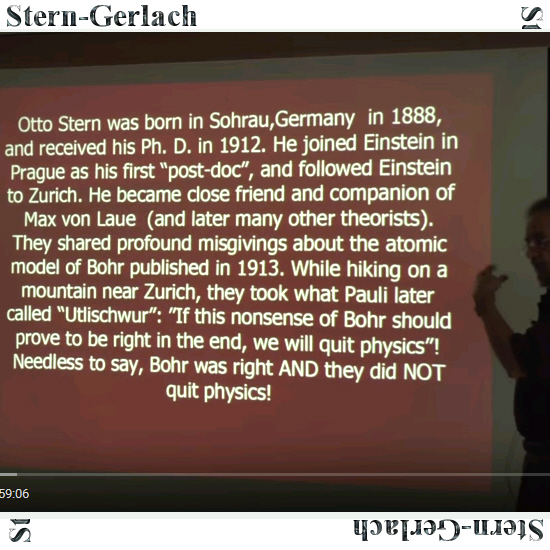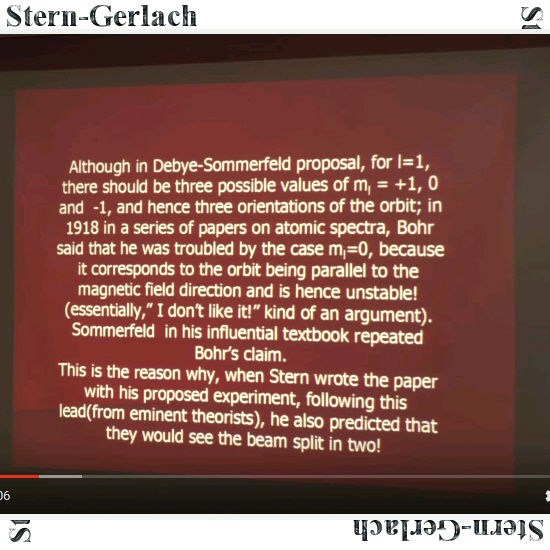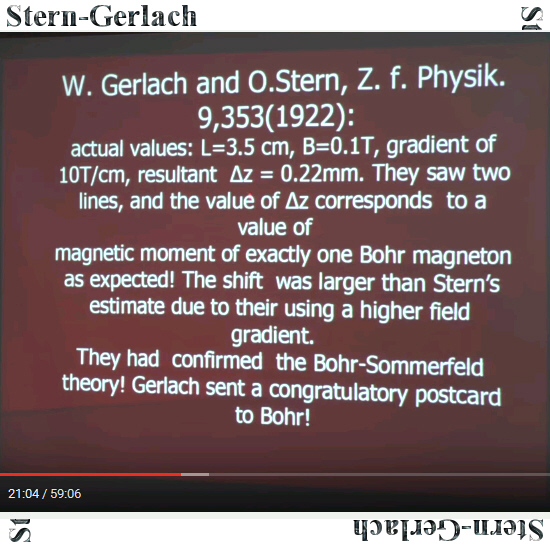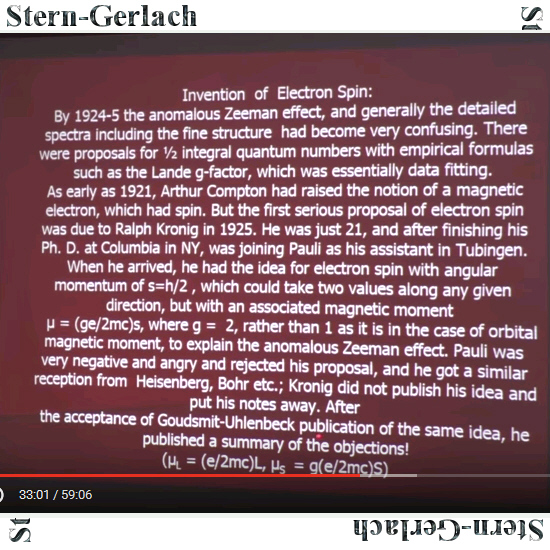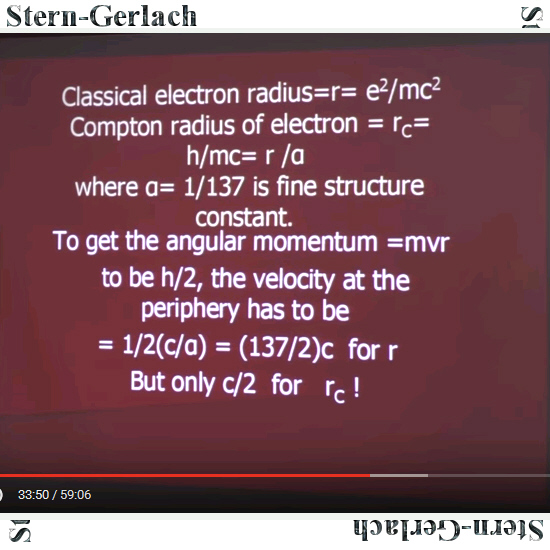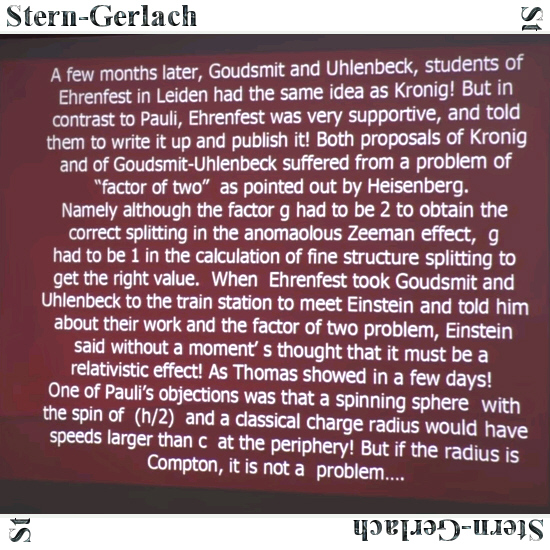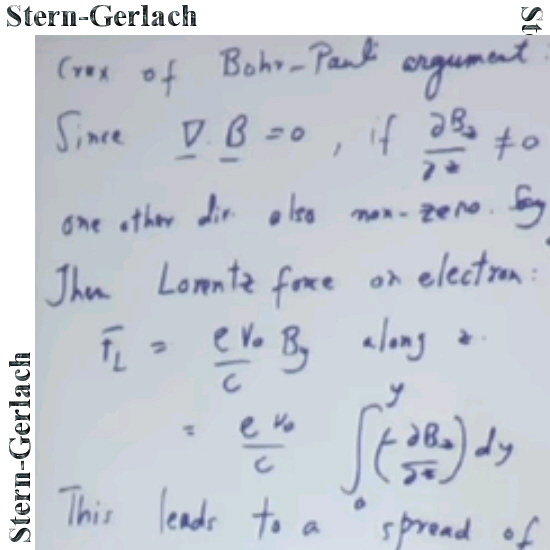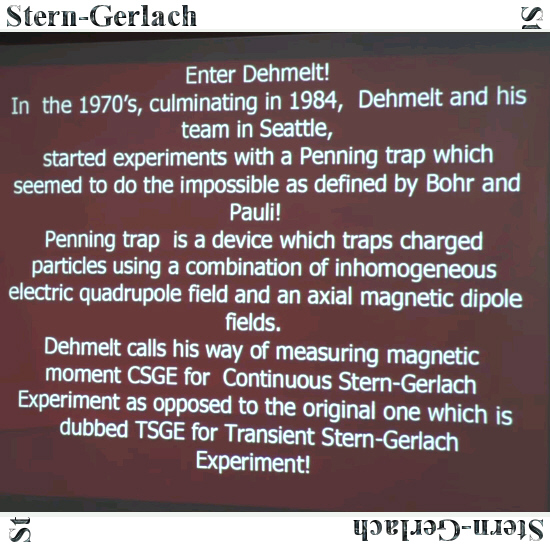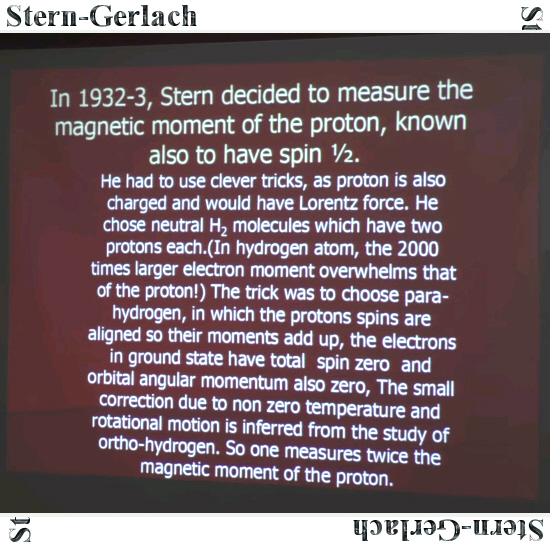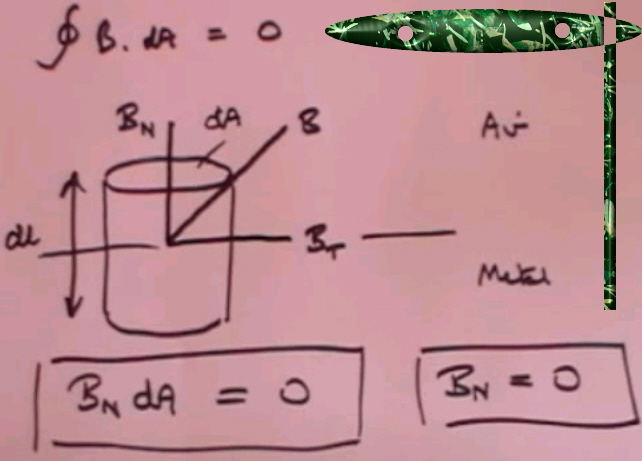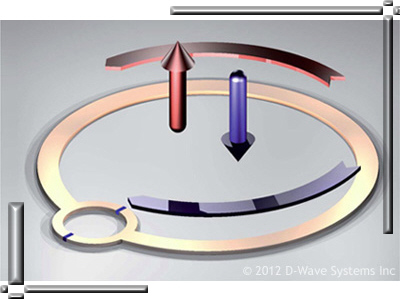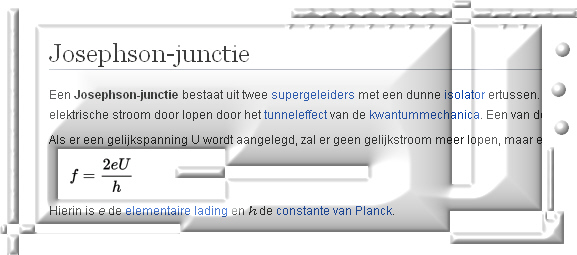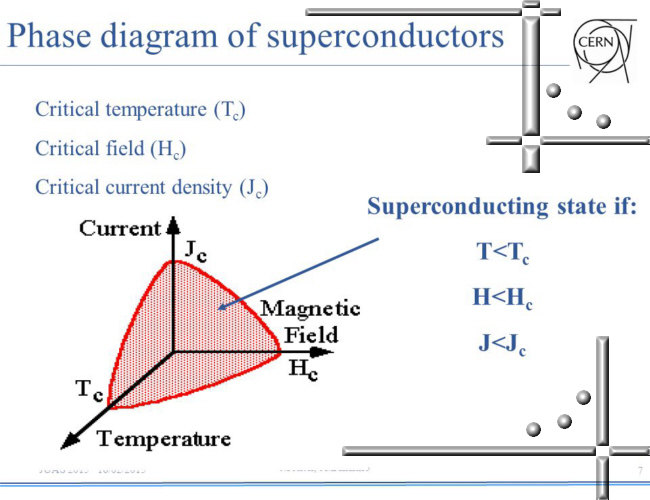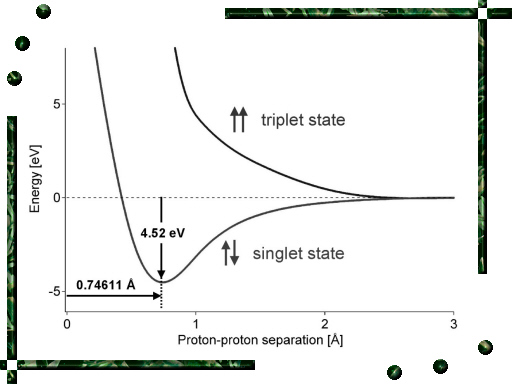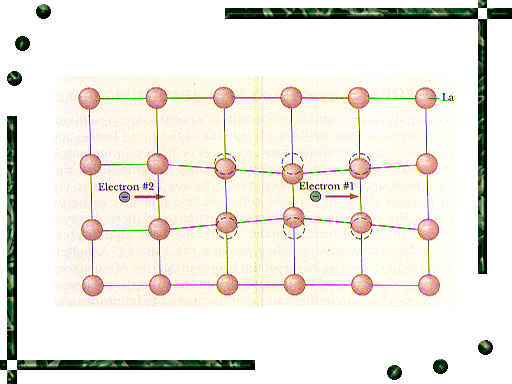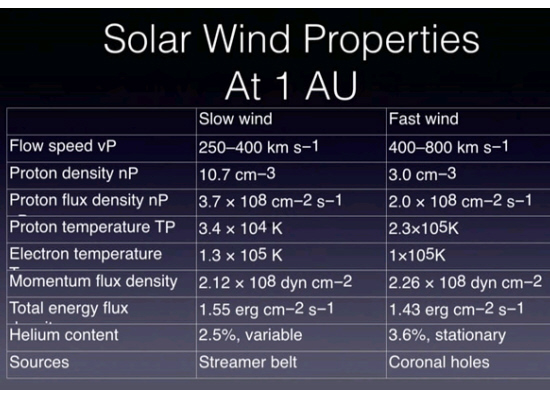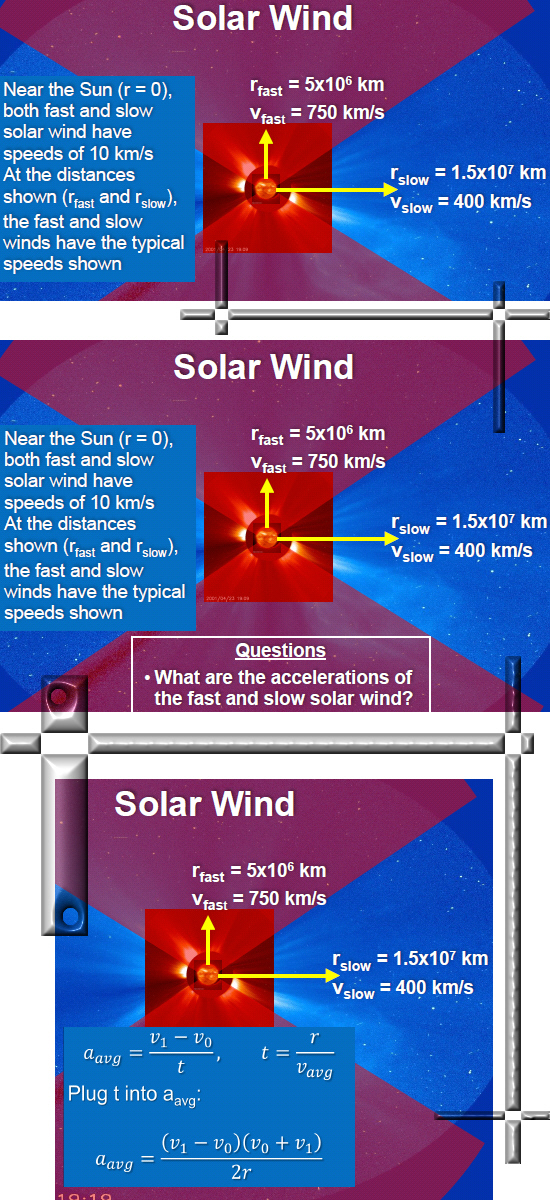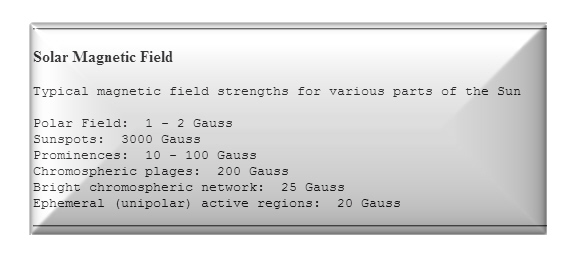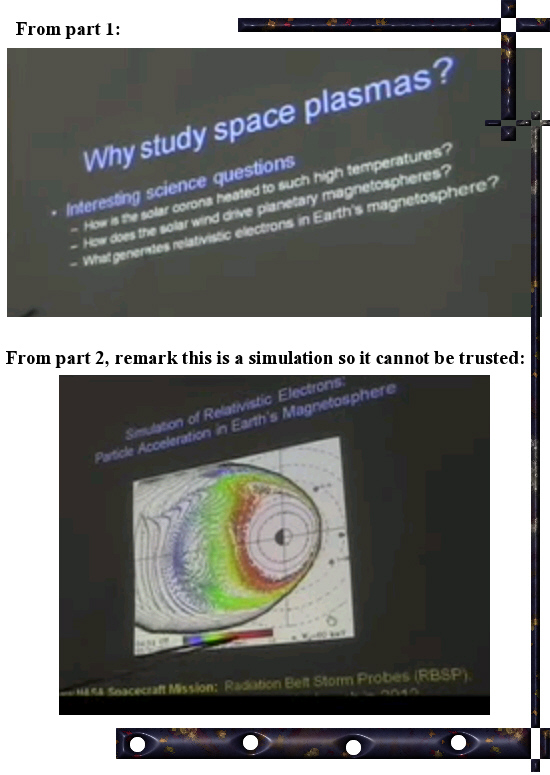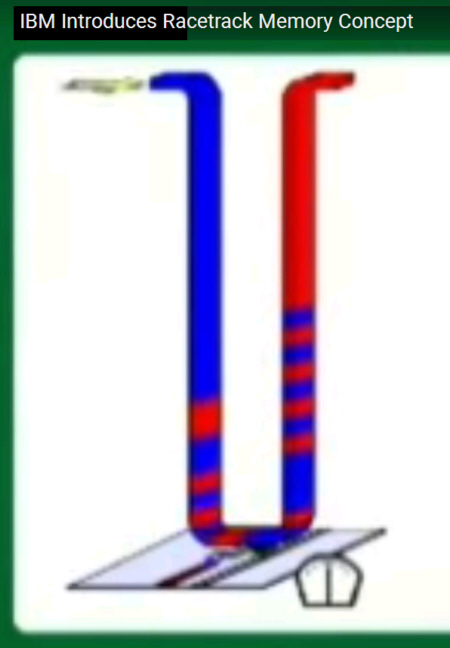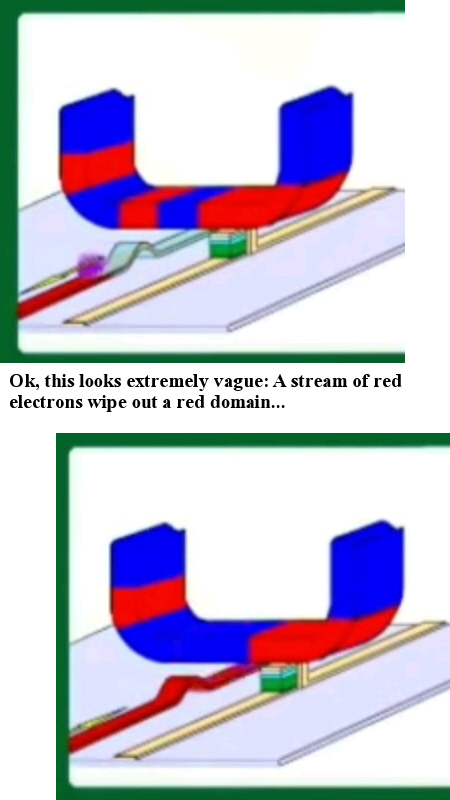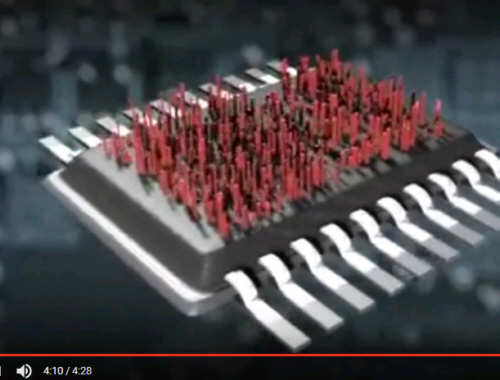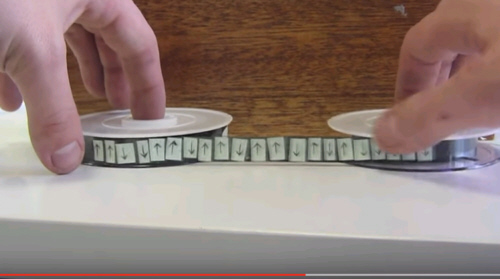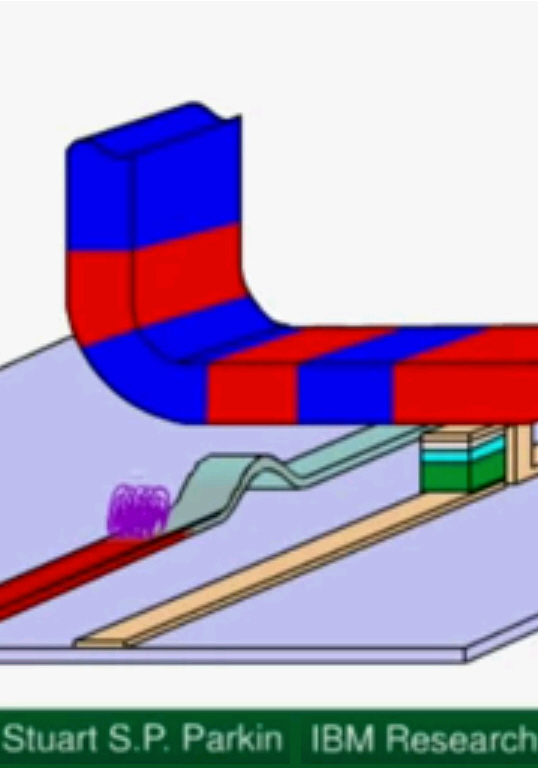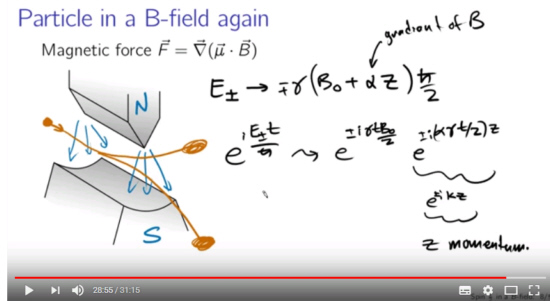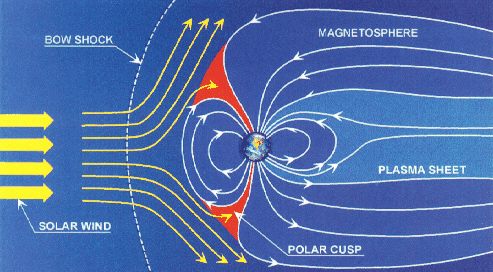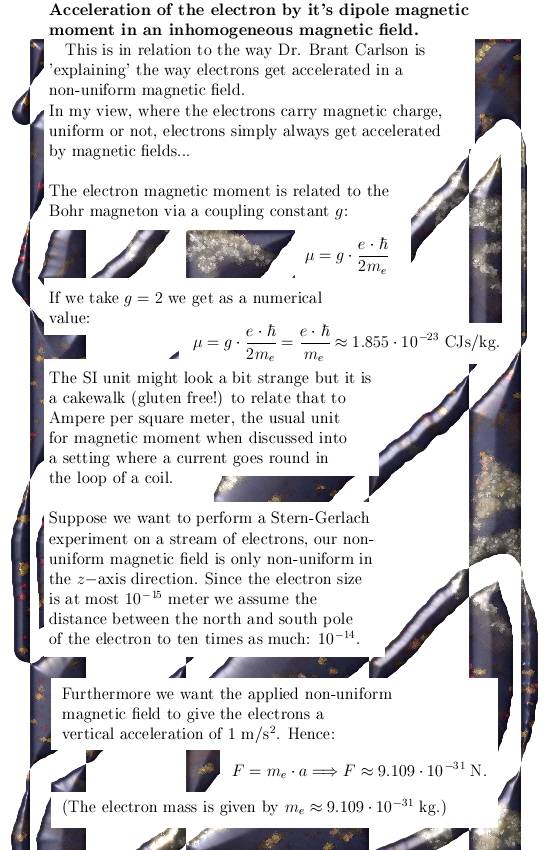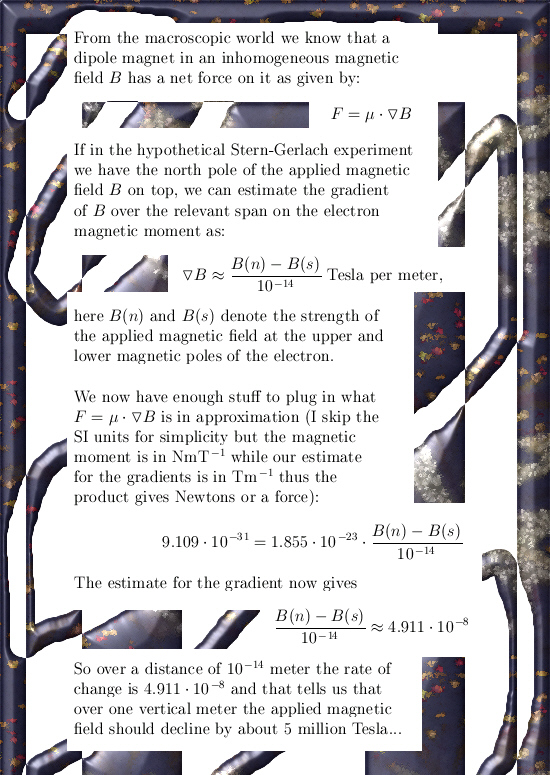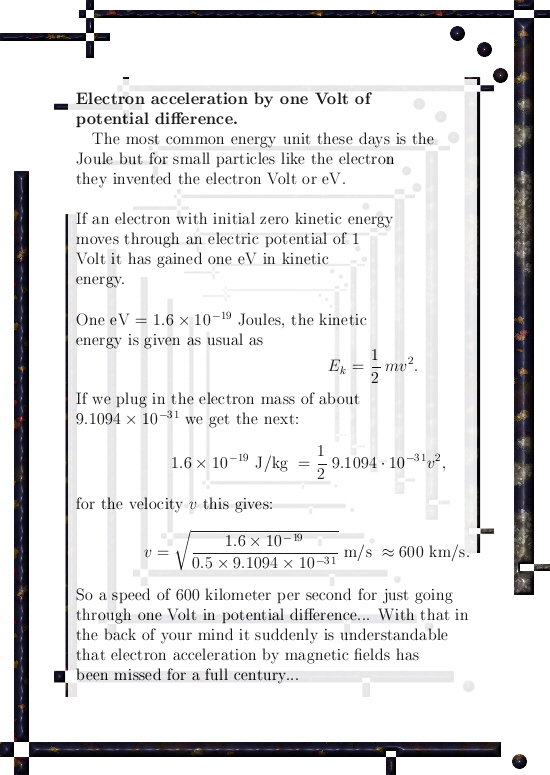|
|
| Introduction: In
this html page on magnetism we will focus on a weird detail of the so
called Stern-Gerlach experiment from the year 1922 where they managed to
separate a stream of silver ions into two parts. And the culprit was one loose unpaired electron that did split this stream of silver ions. I was 50 years of age when I
read these weird results for the first time and I did not understand
them: Within two days I had the answer: Electrons are magnetic monopoles because only monopoles can be repelled by the stronger side of a magnetic field. I was very surprised by my own result because I too was indoctrinated by 'Magnetic monopoles do no exist' kind of thinking. Anyway, two years back that was the starting point of the 'electrons are magnetic monopoles'. Have fun reading it and
hopefully you will learn something from it.
|
|
|
|
07 Jan
2017: Reason 42: A 60 minutes documentary on the Stern-Gerlach
experiment.
On the video channel Youtube
I found this very interesting documentary, or historical
oversight, on the Stern-Gerlach experiment. This is very important
because it was the Stern-Gerlach experimental results that drove
me to the insight that those results can only be explained if
electrons have a net magnetic charge.
The historical oversight is
given by Sandip Pakvasa, he claims that he has taught quantum
physics for about 40 years and now when he is retired he did dive
into a bit of history known as the Stern-Gerlach experiment. It is worth to view the entire 60 min video at least once but better after a few days see it again, all in all it really contains a lot of stuff. Here is the link and the https thing:
The
Stern-Gerlach Experiment And The Discovery Of Electron Spin - Sandip Pakvasa [2016]
This update contains 10
screen shots from the video, all I do is place my comments around
them.
Screen shot 1 @08,31 minutes
is about Einstein. The last three years I have been wondering what
Einstein knew and thought of the Stern/Gerlach experiment, it is
obvious Albert Einstein never understood what was happening over
there. Also Einstein never understood why electrons must have
electrical and magnetical charge located at the same position
otherwise electro/magnetic radiation would be very
different.
Screen shot number 2@16.00: Here you see a bit of how they struggled to get those quantum numbers a bit straight, for example those quantum numbers denoted with m refer to the total magnetic charge an atom or molecule can have. If an electron jumps from -1/2 to +1/2 the quantum number m is raised by 1. A relative good explanation when
it comes to chemistry is given by professor Dave in the next video:
Screen shot number 3@21.04: This is just some stuff that Stern and Gerlach thought it was important. For example they thought it was important that the applied magnetic field is as inhomogeneous as possible. After all a gradient of 10 Tesla per centimeter is impressive even by today's standards. At present day, as far as I know reality, in the atomic clocks in the satellites that circle the earth for your GPS system they still use inhomogeneous magnetic fields to separate the 'spin up' electrons from the 'spin down' electrons. But if my version of electrons is true in the sense they carry one form of electrical charge and two forms of magnetic charge all this difficult doing is not needed at all and you can just use any kind of magnetic field to separate the electrons when needed in you particular engineering challenge...
Screen shot number 4@33.01: Oh oh oh the Zeeman effect, so horribly hard to understand if you believe that electrons are magnetic dipoles because WTF explains the small differences in energy levels radiated by those pesky electrons? But if you accept that electrons beside electrical charge also carry two magnetic charges, albeit at slightly different energy levels, the Zeeman effect is much more easy to understand. For example if you have an atom with five unpaired electrons and each of those five unpaired electrons could be a magnetic monopole north or down and if there is a small energy difference between being north or south, it is to be expected you get a more or less binomial distribution over the observed spectrum. This is caused by the fact that when looking at a spectrum you see the combined result of many atoms, that is why you get those binomial looking disrtributions.
Screen shot number 5@33.50:
One of the main objections
against the concept of electron spin is the fact it should rotate
faster than 100 times the speed of light in order to explain the
measured magnetic strength. You can also turn this around:
electron spin can only at most explain about 1% of the magnetic
properties of an electron.
Screenshot 6@35.25: Of
course I knew the evil Goudsmit and Uhlenbeck have done; they proposed to
name the stuff 'electron spin' and after that every body got trapped into
this kind of language. Weirdly enough the evil was done by the university of
Leiden and ha ha ha, that is in my home country.
Screen shot 7@40.41: This is a very important screen shot because if you basic assumption is that electrons are magnetic dipoles in that case a Stern Gerlach experiment makes no sense because 100% of the electrons should fly into the direction of the strongest part of the magnetic field. Or as present day physics professors formulate it: The spin of the electron gets projected into the direction of the gradient of the magnetic field... (This is pure nonsense because if spin is a vector what happens to vectors that are perpendicular to the gradient? Once more: is quantum physics a science or do we just mumble around that it is mythical and magical?) The sole fact that electrons will go into the direction of the weaker parts of an inhomogeneous magnetic field is caused by the fact this particular electron is repelled by the stronger parts of the magnetic field. Hence if must have a net magnetic charge and it is not a magnetic dipole...
Screen shot 8@42.36: This screen shot is important because it shows that Mr. Niels Bohr and Mr. Wolfgang Pauli based their reasoning on the Gauss law for magnetism. I guess if you are reading this you know that the Gauss law for magnetism says there are no magnetic monopoles, now at the time of Gauss this was impossible to validate. All they had were macroscopic magnets indeed it is very hard for a macroscopic object to have magnetic charge.
For example the electron
pair follows the Gauss law for magnetism but an unpaired electron
does not. And what about Maxwell? At the time Maxwell crafted his famous equations the existence of the electron was also unknown. Of course you cannot repeat history but sometimes I muse what could have happened if Maxwell knew of the outcome of the Stern Gerlach experiment...
Screen shot 9@44.10: In the future I will definitely write more on this guy named Dehmelt because he is responsible for the constant that has the greatest significance in validation between theory and experiment. As a matter of fact it is claimed by professional physics professors that the Dehmelt guy has found a coupling constant for the magnetic dipole moment that is accurate to many digits. It is important to remark that, as far as I know, Hans Dehmelt never tapped into the electron being some magnetic dipole when conducting his frequency experiments that allowed him to estimate the coupling constant with such high accurancy. On the website of the Nobel prize commitee you can find a nice pdf, do not worry this pdf looks so ancient because back in the year 1989 all that computer stuff was not that advanced as it is today. Just look at his so called 'ion trap' if you scroll down in the pdf; it just does not differentiate between electrons being magnetic monopoles or dipoles. EXPERIMENTS WITH AN ISOLATED SUBATOMIC Let's leave it with that because monopole magnetism can also perfectly explain so called 'magnetic resonanse'.
Screen shot 10@: In this last screen shot we observe that my insights and those of the professional physics professors align when it comes to the role mass plays. The weird thing about electron and proton magnetism is that it is inverse proportional to the mass of the particle in question. We know that the proton is much more heavy compared to the electron and that makes the electron king & superior when it comes to understanding it's magnetic monopole properties. So at the end of this update I would like to declare Otto Stern as one of my heroes in physics because one way or the other he kept on trying to find the magnetic properties of protons. (Protons are also classified as spin half particles, as far as I know reality also neutrino's are classified as spin half particles although nobody explains that in an understandable fashion.) Here is the latest screen shot number 10:
Ok, end of reason number 42 as why it is very very hard for electrons to be magnetic dipoles.
|
|
31 Jan 2017: Reason 43: The way a Faraday box and other mirrors work.
Most people know what a mirror is: If you look at it you see a reflection of yourself. But since people cannot see magnetic fields or electrical fields, stationary or oscillating, the fact you see your mirror image says that the light that is just an electric-magnetic wave is reflected. Both the oscillating electrical field and oscillating magnetic field get reflected. A so called Faraday box is a box of metal and inside the box there is no em-radiation. Another example is your magnetron oven; if you look through the window of the door you see a metal sheet with al lot of small holes in it. The microwaves generated in your magnetron over are em-waves with a wavelength of let's say 12 cm. The small holes in the metal shield in the oven door are just too small and as such the em-radiation stays inside the oven. __________
In this update we are going to try and explain as why
metals reflect electro-magnetic radiation; the official explanation of the
professional physics professors make a very very sloppy use of the Gauss law
for magnetism. Why does em-radiation get reflected by metal surfaces? __________ Originally I planned this reason number 43 to be about spin waves, but thinking on spin waves I realized that if the official theory of electrons being magnetic dipoles that em-radiation hitting metal would repel the oscillating electric field but not the oscillation magnetic part of the em-radiation. But that means we would get spin waves in the metal and the reflection of light in a mirror would be much more like your reflection in glass or so. Yet your mirror image is more or less perfect em-radiation ready to be processed by your eyes and it is very very hard to see the difference between original light and reflected light by a mirror... Suppose the official version of an electron is true so it is a magnetic dipole. In that case the oscillating magnetic part of the em-radiation would only make the electron rotate on it's place and that would hardly sap any energy out of the em-wave. Professional physics professors also state that the electrical part of the em-radiation makes the electrons accelerate (and that acceleration is perfectly 180 degrees out of phase with the incoming light and that is the root source of the reflection). A relatively good video of 34 minutes is the following:
Effect of Electromagnetic Radiation on Metals
I will cut and paste a few screen shots from the video
here in this update, the first screen shot is from 12.11 min where
drphysicsa tries to 'explain' that there are no oscillating magnetic waves
going into the metal. Here is the screen shot:
Although DrPphysicsA is a relatively good lecturer here with the Gauss law on magnetism (that is magnetic monopoles do not exist) he goes a bit too fast: from the theory he derives that no magnetic field oscillation go into the metal because of the Gauss law on magnetism.
Now the conclusion is right but it is not done by the math
of the Gauss law stating no magnetic monopoles exist. Why is angle in = angle out for em-radiation reflection??? It makes no sense when you view photons as small particles that bounce into metal atoms that are also small spheres. What explains this behavior of light? Later in the video DrPhysicsA is explaining the effect
of electro-magnetic radiation on a sheet of metal. The electrical field E and the associated magnetic field B are in phase. This detail is very important to understand because it means that when the electron is doing it's acceleration, or oscillation, the spatial localization of electric and magnetic charge are the root cause as why in electro-magnetic radiation we have this perfect 0 phase shift. Here is how DrPhysicsA is drawing the stuff; the impending electro-magnetical wave is going in the direction of the z-axis:
With ET = 0 he simply means that electrons inside the metal shield start accelerating in order to compensate for the impending electrical field. DrPhysicsA does not draw the magnetic field denoted by B or, with the coordinates as given here, By because to standard physics theory it does not make electrons accelerate... I disagree with that, it is not some weird Gauss law for magnetics that without any experimental validation is applied to unpaired electrons; no it is the simple fact electrons can carry two magnetic charges that also accelerates these very electrons in the metal.
Suppose the energy in the two fields, the magnetic and
electrical one, are equal. So monopole north electrons will do the one thing and monopoles south electrons will make a move that is perpendicular to the north pole electrons... You must view it as that the energy gets reflected; if the energy in the magnetic oscillating field does not accelerate the free electrons in the metal, it would not get reflected and as such the magnetic field component of em-radiation should penetrate all metals deeper compared to the electrical field component of the em-radiation. In practice I have never heard of such an effect; in practice if you look in the mirror you see perfect em-radiation just like it went into the mirror. This important day to day observation means that the Gauss law for magnetism is correctly formulated within the framework of the Maxwell equations.
Let's leave it with that but if it is a Faraday box
keeping em-radiation out or a magnetron oven keeping dangerous em-radiation
in or the mirror you look in every day, they all work the same: it are the
free electrons that mirror back the energy in the em-waves...
|
|
06 Feb 2017:
Reason 44: The way qubits from Dwave work
Somewhere in the back of my mind I remembered that the qubits from Dwave are macroscopic devices that had two spin streams going against each other. If you work from the hypothesis that electrons carry monopole magnetic charge like north and south, it is easy to explain how you can make two currents going against each other: You must apply a magnetic field that is parallel to the
way the electrons move around.
This picture is a bit vague but that can be forgiven because the goal of the page I found it was only to explain how their quantum computer work. And of course it is often better to keep it simple in the beginning and only later add the details that explain as why such spin currents can exist and how to make them.
Source of the picture: Yet via a Google picture search it was also found that indeed they use magnetic fields directed into the direction of the way the electrons move:
Picture source: I have to admit that I still have to study the Josephson junction details so also for me the above picture is a bit vague because all I know is that such a Josephson junction is a thin insulating layer that only let's through pairs of electrons. So unpaired electrons do not pass such a junction... But spin currents like shown above consist only of unpaired electrons, the electron pair is magnetic neutral and as such is not able to get accelerated by magnetic fields...
A year ago on 10
Jan 2016 I explained super conductivity as a electron monopole effect or
better; as a lack of electron monopoles because the super conductivity
current is done by so called Cooper pairs (these are just electron
pairs). __________ At the end of this reason number 44 I would like to stress how easy it is to understand that electrons carry two different magnetic charges: inside a magnetic field you can argue that a north charged magnetic electron is attracted by the south part of the magnetic field. But it is also repelled by the north part of the magnetic field this electron is exposed to. And for myself speaking; it baffles my mind that scientists can find the 3 color charges of quarks but all the time hang on to silly stuff like the electron is a magnetic dipole... It just baffles the mind. But not all is bad, for example there seems to be some kind of resonation as how these electron pairs cross the Josephson junction, I like to finish with a small screen shot that also baffles my mind: Why do the electron pairs do this? The only reason I post the above picture is that there is 2e in the frequency formula above, I do not have a clue whatsoever about how this all works but the 2e is easy to explain: it is the electrical charge of the electron pair... End of reason number 44, see you around & till updates.
|
|
15
Feb 2017: Reason 45: The critical magnetic threshold in super
conductivity.
Super conductivity is extremely important in practice because it allows for much stronger magnetic fields like, for example, used by CERN in their quest for finding magnetic monopoles. An important feature of super conductivity is that first the electron pairs have to form and only those pairs are the electrons that have zero resistance in the particular super conducting material. For super conductivity to occur three things must be there:
1) A low enough temperature, There are basically two types of super conducting materials, they are known as Type 1 and Type 2, the difference is that Type two materials become super conducting at a higher temperature so that you no longer are dependent on cooling with helium but instead can you the plentiful nitrogen. (Nitrogen is cheap while helium is expensive.)
The reason conductors have resistance is caused by the
interaction between electrons and positively charge nuclei of the atom
making up the conductor; they bounce into the nuclei and that generates heat
and as such loss of energy transport. It is also logical that in thing number 3) the material might be super conducting, but you cannot send an infinite amount of electrical current through it. There are only so many pathways the electron pairs can take and if you apply more current something has to give and that is the super conductivity... Thing number 2) is highly weird, anyway according to the official theory we have that electrons are magnetic dipoles and as such carry no magnetic charge. That is the official version of stuff:
They cannot explain as why electrons only pair in two. But if electrons carry two magnetic charges, one kind of electron carries the north charge and the other kind of electron carries the south charge all of a sudden it is very logical that if the outside magnetic field is too strong the pairing of the electrons just does not set in... __________
Also I would like to remark that just over three years
back when I for the first time observed the outcome of the Stern-Gerlach
experiment, after a few days of thinking about it I arrived at the
conclusion that electrons had to be magnetic monopoles. __________ At last let me show you a picture from CERN where is so called 'phase space' is shown where the interaction between temperature, applied magnetic field and electrical current is shown:
Picture source is slide number seven from: So if from the get go the (average) magnetic fields are just too strong, electron pair formation will never set in...
It is as simple to understand as it is; electron pair
formation does not set in. Till updates my dear reader and thanks for your attention.
|
|
19 March 2017:
Reason 46: BCS theory says electron pairs are bosons...
Ok, it is a very weird name for a theory but BCS is standing for the three people that more or less explained why super conductivity sets in. BCS theory stands for Bardeen–Cooper–Schrieffer theory who in 1957 proposed a possible explanation for super conductivity. The good thing is the Cooper part, even today we name electron pairs often Cooper pairs and for Mr. Cooper it must have been mind boggling: How can it be that electrons that after his beliefs were magnetic dipoles could form electron pairs and only those electron pairs can do the super conducting thing????? The bad thing about BCS theory is that you constantly read about electron pairs being like bosons, this is such a nonsense that at first I skipped it and skipped it until I realized this boson stuff is really a part of the 'official explanation'. But if electrons are also magnetic monopoles coming with the two magnetic charges, in that case the electron pair is magnetically neutral and will have no interference with other electron pairs. Bosons, unlike Fermions, do not apply to the Pauli exclusion principle. A goof example of the boson is the photon or the particle of light. You can stack any amount of photons into the tiniest of spaces, you can always add much much more photons. With Fermions you cannot do that, particles like electrons, protons and neutrons simply must have a little bit of space to exist and that is why stuff like atoms or molecules are so very large compared to nuclear size and the giant electron cloud.
Even BCS theory itself implies the electron pair is not a
boson like thing because we still have the critical currency threshold; if
you put too much electrical current through a super conducting wire the
super conductivity breaks down. And in a broader explanation; just look in the science of chemistry how the electron shells behave in atoms and molecules. Every thing hangs together with electron pairs but when some shell if full no more electrons are allowed, paired or unpaired. So the boson side of BCS theory is one hundred percent
bogus nonsense. My main explanation for electron pairs contributing to the super conductivity is given by the fact that electron pairs are magnetically neutral, especially when it comes to interaction with other electron pairs. Ok ok electron pairs will always repel because of the same electrical charge but in a metal there is always that crystal lattice structure of positive ions; hence there is not a lot of repelling to do. Another example as why the magnetic neutrality in my view is playing an important role is, for example, the hydrogen molecule. Here you see the binding energy between two hydrogen atoms:
Picture source: About hydrogen https://hydropole.ch/en/hydrogen/abouth2/ As you see on inspection: if two hydrogen atoms with the same spin state for the electrons meet, they will never bond. They only bond into a hydrogen molecule if the electrons carry opposite magnetic charges. __________ Let me give you a link and let me quote a bit of the nonsense about electron pairs following the rules of boson like particles (once more: electron pairs are not bosons but fermions, once a atomic or molecular orbital is filled no more pairs can enter that orbital): BCS theory https://en.wikipedia.org/wiki/BCS_theory Here is the quote: Evidence of a band gap at the Fermi level (described as "a key piece in the puzzle")the existence of a critical temperature and critical magnetic field implied a band gap, and suggested a phase transition, but single electrons are forbidden from condensing to the same energy level by the Pauli exclusion principle. The site comments that "a drastic change in conductivity demanded a drastic change in electron behavior". Conceivably, pairs of electrons might perhaps act like bosons instead, which are bound by different condensate rules and do not have the same limitation. Comment: All that Fermi level stuff is something I still havd to study but one thing is clear; even the great Fermi had no clue whatsoever about what electron spin actually is. There is nothing spinning around it is just magnetic charges, one named north pole charge and the other named south pole charge... __________ On one of those popular science websites named Quora I found the standard explanation of why Cooper pairs (electron pairs) form in the first place. It is a strange explanation because if an unpaired electron has electrical resistance in the first place, two electrons will only meet more resistance. Remark the crystal lattice is made of positive ions... Quote: Lattice ions are positively charged. Hence when a negatively charged particle like electron zips through the lattice, the lattice in that region contracts a little and the positive ions come close together in that region. An electron moves much faster than the positive lattice ions can respond so lattice response is a bit sluggish and even after the electron is gone, the positive region remains for a while and causes attraction for another electron. This is the picture behind Cooper pair formation. Source of the quote: Condensed Matter Physics: In the BCS theory of superconductors, why is it that the formation of Cooper pairs is most favoured when the electrons are moving in opposite directions?
https://www.quora.com/Condensed-Matter-Physics-In-the-BCS-theory-of-superconductors-why-is-it-that- And from the same source a picture that 'explains' why super conductivity emerges is the next picture that shows so called 'electron phonon scattering':
The above explanation misses an important thing: Why are there only electron pairs observed in all super conductivity materials? If this 'electron phonon scattering' explanation has any meat on the bone, why should it stop after that passage of the second electron in all kinds of materials? While using the idea that electrons carry one electrical charge and two possible magnetic charges is a far better explanation of things observed in reality... __________
Ok, this was reason number 46 as why electrons cannot be
magnetic dipoles. __________ Updated on 05 April 2017: After watching a couple of video's where you have all those professional physics people decrying stuff like 'WHY DO ELECTRONS FORM PAIRS BECAUSE THEY REPEL EACH OTHER BECAUSE OF THE SAME ELECTRICAL CHARGE THEY HAVE!!!' Those very people never get tired of stating that 'Quantum physics is so strange that if you think you understand it, you do not understand it'.
But what I did forget to mention in the above reason
number 46 is the during the super conducting phase of a material, the
electron pairs are magnetically neutral to other electrons pairs as found in
the electron shells of the ions of the super conducting metal. This evening I made a very very simple model and about 15 to 20 minutes of calculations say that those 'electrical neutral paths' even go right through the electron clouds surrounding the nuclei... That was a surprise to me because I expected the both magnetic and electric neutral path for an electron pair to be outside the electron shell. And if you think about that you more or less have the key to understanding super conductivity on both the low temperature scale and those modern high temperature materials known under names like cuprates and stuff:
Find the path with the least magnetic and electric forces
as acted on the electron pairs. It is a beautiful process if you try to figure out how it works; and that stupid stuff with so called 'phonons' that are only vibrations of the metal lattice where the electron pairs travel through is just nonsense. __________ Back to 1911 and the guy named Heike Kamerling Onnes who discovered super conductivity for the first time as history knows it. Let's look at Mercury, it is number 80 on the list of periodic elements so it has 80 protons in it's atomic nucleus. The stuff is frozen very cold and the mercury is in a lattice. Suppose the official BCS theory is true; a loose or unpaired electron wanders through this lattice of mercury atoms. Let's say at some point in time the loose electron is surrounded by 8 mercury atoms, can this loose electron cause lattice vibrations that cause other electrons to join that loose electron? Now 8 mercury nuclei carry 640 positive electric charges. How much of a lattice disturbance will this give? Come on the BCS theory based on lattice disturbances is a no starter from the year 1957 on. It is nonsense, one electron can never displace 8 mercury atoms. Let me repeat the nonsense once more:
Ok, now you are really at the end of the tiny tiny faults in the BCS theory of super conductivity. Till updates my dear reader.
|
|
19April2017:
Reason 47: The acceleration of the solar wind, Part 2.
Last year on 14 Oct 2016 we already looked at the possibility that spin half particles like electrons and protons get accelerated by the magnetic fields from the sun. For example the picture below was posted in that update.
There is only one mystery particle in this solar wind:
Helium. In the last line of the picture there is an important omission:
Now I wasted a whole lot of evenings trying to find a good
oversight of the distribution of speed of the solar wind inside our solar
system but nowhere I could find a source that covers it all. Likely the
solar wind is never properly mapped through our solar system, this is not
strange because scientists to not understand why the solar wind accelerates. __________ Why this update? I found a nice pfd where a guy named Andrew Jordan (at the time back in 2001 he was working at the university of New Hampshire). So although 16 years old I decided to post a few screen shots of an amazing but easy to understand calculation he did in order to estimate the acceleration of the solar wind right at the beginning. Ok ok, for these easy to understand calculations you need a few assumptions like a constant force acting on the particles (so that the acceleration is constant), such an assumption can be doubted but anyway it is just a rough estimation. Pdf source of the screen shots: Acceleration
of the solar wind Here we go with a few screen shots:
Observe how easy Andrew removes the unknown acceleration time t and if you plug that into the average acceleration you get that amazing thing that is related to the difference between two kinetic energy measurements... Once more; this is based on an assumed constant acceleration because of the way the average acceleration is estimated, but this is more or less allowed because of the tiny distances the plasma particles have traveled. The crude estimated calculations say that:
Now Andrew Jordan expresses this in G (the earth gravitational constant for measuring acceleration) and thinks that 0.5 G is not a problem. Yet at the surface of the sun the gravitational pull is something like 28 G (giving rise to a so called 'escape velocity' of about 620 km/sec) so in practice the slow and fast wind particles get accelerated by about 28.5 and 34 G. In my view the bulk of the acceleration is done by magnetic fields, if might very well be that the sun also has a large electrical field but as far as I know this is only studied by side-stream scientists like the weirdo's from the Thunderbolds project that think all galaxies hang together from electrical forces only... NASA has a relatively good fact sheet upon solar stuff, here is the link:
Sun
Fact Sheet From the NASA fact sheet another strong clue that spin half particles are indeed accelerated by magnetic fields is the next screen shot:
About 3000 Gauss for sun spots looks tiny for what must be happening locally with all those arches of solar plasma coming out and falling back again into the sun, but some NASA satellite from far away can only measure the average magnetic strength over a wide area so that is all we have. So the polar field might look very very weak but at least it keeps on transporting the solar wind while the more strong sunspots might give rise to flares that very often bow back into the sun. You can compare this to silver ions Ag+ where one or more unpaired electrons caused all that fuss in the Stern-Gerlach experiment from 1922.
As a comparison, the strength of the earth magnetic field
is in between 0.25 and 0.65 Gauss. __________ At the end of this update I would like to close with two screen shots from 2 video's from the Rice university because it is always funny to observe those 'professional people' wondering why the plasma in the solar system accelerates. From the viewpoint of social sciences it is amazing that a collection of relatively high IQ people decade in decade out never arrive at the idea it must be the magnetic fields; this is the damage done by the Gauss law of magnetism. Here are the links to the two video's:
Rice University Physics and Astronomy: Space Plasma Physics part 1 of 2
Rice University Physics and Astronomy: Space Plasma Physics part 2 of 2
From the first video the screen shot is a highly laughable
question, it is at about 3 minutes and 40 seconds in the video. WHY RELATIVISTIC ELECTRONS IN EARTH'S MAGNETO SPHERE????? Answer from Reinko: Just wait another 10 years and the people from ITER in France will be asking the same question when it comes to the failure of their precious fusion reactor... From the second video I have a screen shot of a SIMULATION, the simulation says that as the electrons zoom in on planet earth they go faster and faster. They are accelerating! Please DO NOT TRUST SUCH SIMULATIONS because such computer simulations might mimic the actual behavior of the plasma so those people have to get rid of the Gauss law for magnetism in a sneaky way until they have the result they simulate in the first place. But it is a good joke: relativistic electrons coming from the sun and all those university people year in year out they do not have a clue whatsoever...
__________ Also interesting to read is a hypothesis from a group of researchers who proposed back in 2013 that is was ion cyclotron waves that cause the heating of the sun's atmosphere and the different velocities of the diverse plasma particles. If I understand it correctly, ion cyclotron waves is em radiation caused by the Lorentz force on ions that make them go round and round and as such radiate em radiation. Source:
Solar Wind Energy Source Discovered In my view this only (partially) explains the high temperature of the solar atmosphere and solar wind but not the acceleration or the lack of deceleration. After all that is said and done; that is best explained via spin half particles carrying two different magnetic charges. (But we must keep an open mind of course because at a certain plasma density it is very logical the Lorentz force starts contributing to the temperature...) __________ Ok, you are now at the end of reason number 47 as why electrons cannot be magnetic dipoles. Let's leave it with that, till updates.
|
|
24 July
2017: Reason 48: The failure of IBM's racetrack memory.
After about 3 months it is about time to post another update in these magnetic files where we mostly compare the official version of electrons as being magnetic dipoles to my version of electrons as carrying one of two magnetic charges. Back in the year 2004 IBM patented a so called racetrack memory; the goal is to leave the two dimensional structure of for example spinning hard disks behind and go three dimensional with nano wires that go vertical. Just like in a city where you get all those high rise buildings; going 3D is a way of storing much much more information into a small space. It is now 2017 and in all those years they made zero point zero progress because they keep on holding to the idea that electrons are magnetic dipoles and as such they run into all kinds of problems that they do not understand. In a broader sense this is also what plagues the entire field of so called spintronics; in spintronics they try to use the spin of an electron but decade in decade out you only get the bla bla bla and never any device that works properly. The only thing that I know of and works properly are those tiny read & write heads into spinning hard disks, that is based on the so called Giant Magneto Resistance effect. That was a great job in making computer hard disks having much more capacity but if you study the details once more the Reinko Venema version of reality is a much better model as why it works compared to electrons being magnetic dipoles. More info on the GMR effect: Giant
magnetoresistance So the entire academic field of spintronics has only one giant success: Huge capacity increases in computer hard disks but if based on electrons being magnetic dipoles it was only a lucky find.
The idea of racetrack memory
is about magnetic domains moving up and down nano wires where
there are magnetic domains carrying the binary information. The
binary information passes a read & write head and that's it. Here is a picture from an IBM video that explains the concept, I have chosen this IBM failure because in this kind of spintronics technology the two visions on electron clash hard and only one will prevail for future use:
1) IBM version (and all
other professional physics people) viewing electron spin as a
bipolar magnet that can be represented by a vector, or
According to Stuart Parkin
(an IBM fellow) the magnetic domains move into the direction of
the injected spin. In IBM's view where electron spin is a magnetic dipole it has to be that each blue and red part of the nano wire is a magnetic dipole on it's own. For example the relatively large blue area at the right bottom should be rather stable because all electrons have their spins aligned into the same direction. In my view large blue or red spots are instable by definition because you get too much magnetism of the same kind concentrated in just one tiny spot. In the next picture you see a very very vague explanation of how the write cycle on this kind of magnetic material is supposed to work: A stream of read electrons make a red domain on the nano wire turn red...
Please remark that turning a
red domain into a blue domain in this way only validates that
electrons carry two different magnetic chages. Since same charges
repel, it is not much of a miracle that the red domain gets wiped
out. Source of the above two pictures:
IBM Introduces Racetrack Memory Concept
(the video is only 60 seconds long and dates back to 2008)
Now are posting links to
easy to understand video's anyway, why not post also the next
video with only 919 views in six years of time, it is from ABC
news and we have zero nano wire magnetic memory now in the year
2017. Ok ok, the above video is highly simplistic so the average obese US citizen can understand it with the tiny brains they have. But at Glasgow university they also have trouble understanding any clue whatsoever about magnetic spin. Click on the next picture of how to not use nano wires in relation to the storage of information into the tiniest possible magnetic domains (they got the spin still up and down but the magnetic tape horizontal; just another case of university people getting money for talking nonsense).
Title of the last video from
the Glasgow university people: My simple advice to the Glasgow university people is: Why not cough up some experimental evidence that electrons are indeed magnetic dipoles before you do your talking on electron spin? __________ In another video with an interview with IBM fellow Stuart Parkin I found the next even more confusing picture; there is some pink thing going back and forward and that turns a small part of the nano wire from red to blue or blue to red. It might be that this weird pink thing represents a coil because the professional physics people know that with the application of magnetic fields you can make tiny magnetic domains just like for example in magnetic tape. But they think that it are the electrons that all align themselves into the same direction while I think it is the displacement of electrons that makes these magnetic domains tiny macroscopic magnets.
And, just by the way, if you
look it up how they make permanent magnets, one the the methods is
just applying a very strong magnetic field for a short time and
you permanent magnet is ready to go. But the magnets get very warm
by doing this, if it was just a case of stamping electrons into
the right direction you cannot explain the heat because heat is
the vibration of the ions in the metal lattice... Anyway, here is the link to the 8.18 minute lone video:
Racetrack
Memory with Stuart Parkin And here the picture with the weird pink thing, it is about 3 minutes into the video: But at 7.20 minutes into the video there comes a monkey out of Stuart his sleeve: We can manipulate the spin state of magnetic domains in the nano wire by a nano second long pulse of spin polarized current.
Comment: So the weird pink
thing is not a coil, it is indeed based on the repelling of red
electrons in the nano wire by red electrons in the write device.
This must be one of the places where this whole concept runs out
of the rails because those red electrons will pollute the blue
magnetic domains next to them... At 7.40 minutes into the video Stuart estimates that it will take 5 to 7 or 8 years before there is a kind of prototype, the interview was from 2010 and now in the year 2017 there is no prototype at all... __________ How would I set up a nano wire racetrack memory system using electrons carrying only one electric charge and two possible magnetic charges? I would store information much more like the way CRISPR DNA is encoding the information about enemy virussus: CRISPR DNA is repeating DNA with small slices of the information you want to store in between. The repeating part on the nano wire could be 10 binary digits long like NSNSNSNSNS, after that a few magnetic domains where in the middle the actual information bit is stored. So one bit of information could look like: NSNSNSNS BBNBB NSNSNSNS The N = North magnetic domain in
the middle contains the actual information you want to story. Of course repetition size and buffer size will depend on the actual materials used, that would be a job for those solid state matter folks and not for the theoretical kind of guy I am. That is how I would set the stuff up instead of all those nonsense with electron magnetic moment being a vector. __________ Ok, end of this reason number 48 as why electrons cannot be magnetic dipoles.
|
| 07
Sept 2017: Reason 49: The amazing strength of the Jupiter aurora's.
Jupiter is much further away from the sun and as such it might be expected that the solar wind that causes the earth aurora's has lost much steam when it arrives at Jupiter. If the solar wind particles would all be magnetic dipoles, the magnetic field of Jupiter would never be able to accelerate the solar wind particles. It is no secret that on these magnetic pages we slowly have arrived at the conclusion that things like electrons cannot be magnetic dipoles and as such it should be capable for the magnetic field of Jupiter to accelerate the solar wind and sucking it into the magnetic north and south pole of the gas planet Jupiter. By the way, Jupiter has a very strong magnetic field.
Here is a wiki on that detail: Yesterday at space dot come we had the next news article: What's Powering Auroras on Jupiter? NASA's Juno Probe Finds Puzzling Clues A few quotes from the space dot com article; quote 1: Jupiter's auroras are hundreds of times more energetic than those on Earth and don't radiate in wavelengthsthat are visible to the human eye. But both Jupiter's and Earth's light shows are manifestations of the same fundamental phenomenon: accelerated particles colliding with atoms in the atmosphere, releasing energy in the form of light. Comment: Once more, if electrons were magnetic dipoles they cannot be accelerated by magnetic fields because the forces acting on the north and south pole of the electron would always cancel out (assuming of course the magnetic field is homogenous but because the electron is so small this is always assured in most magnetic fields let alone magnetic fields of the earth or Jupiter...). Inside astronomy (or better inside plasma physics) there is a strange theory that individual electrons get accelerated by waves in the plasma. The idea is that many small accelerations combine to giving electrons and or protons relatively large energies. Here is quote number 2: "The wave exchanges just a little bit of energy with the electron. And then [the electron] goes on to exchange energy with another wave. And slowly but surely the particle gains a huge amount of energy by interacting with thousands of different waves," Mauk said. "The result of that is a statistical distribution of energy. Some particles have intermediate energy, some have very high energy, so you get a broad distribution of energy. That's what we see in the energy fluxes." Comment: In free space most of the time the plasma is collision less, this means that the density of plasma is so low there are no significant collisions between plasma particles. In such an environment it is hard to see how plasma particles could get a serious acceleration anyway... From the space dot com article two pictures of the southern and northern auroras, of course the colors are changed here and there because the em-radiation falls mostly outside the human eye: So all in all reason number 49 serves as a strong clue that solar wind particles actually get accelerated by the strong magnetic field of the gas giant Jupiter. Till updates my dear reader. Updated on 14 Sept 2017: After reading a bit more on
the subject of the Jupiter aurora's (they are named Jovian aurora's) I
completely missed the fact that the strongest aurora's on Jupiter created
by another process than on earth. Here on earth scientists think there is
an electrical field parallel to the earth magnetic field that causes the
electrons going down into the earth atmosphere and there interact with the
air molecules. But on Jupiter the electrons have so much energy that the
interactions with the air molecules is not in the visible light but it is
uv radiation. There is absolutely no reason to panic because if my insights into electrons and protons being magnetic monopoles where the force on the electrons generated by magnetic fields is 1830 times as strong as on protons, during the evolution of the solar system it is expected the sun has a giant positive electric potential while all planets with a magnetosphere are highly negatively charged. It is well known that Jupiter acts as a giant vacuum cleaner when it comes to comets and stuff like that; the gravitational pull cleans up the solar system and that gave life on earth the possibility to flourish. But may be Jupiter is also a large cleaner of the solar wind... If it is true that electrons are far more attracted to magnetic fields, in that case the remains of the solar wind behind Jupiter should contain much less electrons. Of course Jupiter cannot build up limitless amounts of electrons because they have only one electrical charge and if the planet as a whole becomes to negatively charged the electrons think about getting away from Jupiter... And, by the way, the news reports indicate electrons having energy levels of up to 400 thousand eV suggesting Jupiter has an electric potential of 400,000 Volts if the energy of the electrons was only from electrical fields.... By the way, the earth has a surplus of electrons just
as you might expect if electrons carry magnetic charge. Natural electric field of the Earth Here are a few more links that contain not very much information but anyway, from 10 Sept: Enigma of Jupiter’s powerful auroras What drives Jupiter’s brightest auroras? In order to show to you that present day physics have absolutely no idea that magnetic fields can accelerate electrons let me quote you the next text: Observations of auroral precipitation characteristics (and the resulting ionospheric ionization profiles) have shown that, within discrete auroras, field-aligned acceleration of the precipitating electrons plays an important role (inverted-V electron precipitation). It seems likely that upward directed electric fields are formed to create this effect (e.g., Weimer and Gurnett, 1993), although different wave-related schemes have also been suggested (e.g., Bryant et al., 1991). Comment: Here you see a lovely example of how our limited human brain works because 'It seems likely that upward directed electric fields are formed to create this effect'. But it is well known that electrical fields are caused by separation of electrical charges, only when a body of mass has a surplus or deficit of electrons it creates an electrical field... Source of the quote: Field-aligned potential drops And the last link but not the least one is from Nature: Discrete
and broadband electron acceleration in Jupiter’s powerful aurora Ok, let me bring this reason number 49 as why electrons cannot be magnetic dipoles to an end now I have more or less corrected the giant speed I composed the first part of it: it was only 20 minutes of labor to produce the above reason nr 49 from 07 Sept 2017 but oh oh Reinko how can you make a serious update in just 20 minutes upon stuff that has needed billions of years to evolve like solar wind and the reaction of a giant gas planet like Jupiter on that..... End of this update to reason nr 49 as why electrons cannot be magnetic dipoles.
|
|
14Oct2017:
Reason 50: A calculation on electron acceleration by a magnetic field.
On the other website as part of a larger post I tried to calculate how strong the gradient of a non-uniform magnetic field should be in order to accelerate the electron with a = 1m/s^2. I used the classical result where the resulting force on an electron equals the magnetic moment times the gradient of the magnetic field. The results are staggering: If the electron diameter is of the order of 10 to the minus 15 meters, you easily need a gradient of 5 to 10 million Tesla per meter in order to accelerate the electron with only about 10% of the earth gravity. Of course if you would confront professional physics people by that, their criticism will be as shallow as their thinking. They will remark that you cannot use a classical result like the net force on a bar magnet because in the quantum realm 'everything is different'. In my view bipolar magnetism (as described by Gauss's law of no magnetic monopoles) is typical a property of macroscopic things. And at the beginning of the previous century without much thinking people simply assumed this also to be true for particles like electrons and protons. The smallest scale possible where magnetic dipole is observed is the electron pair, this is not a macroscopic thing but most of the time bipolar magnetism is related to relatively large things. Of course it is no problema at all when the same pro's explain the result of the Stern-Gerlach experiment because of the net force electrons feel in a non-uniform magnetic field. But they never give you an actual calculation because it is every body's guess what the electron size actually is. Here is a picture of the blah blah blah these people do, it is from a video that will link at the end of this update:
__________ There are a few results out there on the size of the electron, let us look at a few of them: 1) The Classical electron radius is about 2.82 times 10 to the -15 meter. Therefore I used a difference of 10 to the -14 meter in my calculation for the distance between the north and south pole of the electron; this distance gave the 5 to 10 million Tesla per meter as needed gradient for the inhomogeneous magnetic field. 2) Collision experiments suggest the radius of the electron should be less then 10 to the -18 meter. So that is over one thousand times as small as the classical electron radius and because it is an experimental result, for me this is the most reliable one.
3) The Dirac equation says in the order of 10 to the -13
meter but there is a tiny problem here: that is after 'renormalization'.
When professional physics folks get a infinity in their calculations they
do not say we are on the false track but they replace this infinity by
some finite number...
4) String theory says the electron radius should be
about the Planck length... __________
I cannot say enough that you should not be fixated on
the actual outcome of the calculation that says many millions of Tesla
gradient needed, given the fact the electron size is simply unknown it is
important to understand that this story of electrons being a magnetic
dipole is in fact not possible.
At last it is about high time to show you that very easy calculation where I use the distance between the magnetic north and south pole of the electron to be 10 to the power -14 meter:
Actually the above calculation still contains an error; I was forgotten to multiply the electron magnetic moment by the spin value of 1/2. If you take that into account the applied magnetic field should even have a gradient that is twice as strong. If you would use the electron size as based on the results of collision experiments the electron size must be below 10 to the power -18 and if electrons were really magnetic dipoles you would need a ten thousand times bigger gradient in the applied magnetic field... Let me skip the nonsense from string theory that says electrons should have the size of the Planck length because now you would get gradients that are just as crazy as string theory is. And at the end of this update a link to a 31 minute video of a guy named Brant Carlson who is very good at blah blah blah when it comes to the acceleration of electrons; you just sketch a picture (see above) do some blah blah blah about non-uniform magnetic fields and expect the audience to be swooped by how smart you are...
Spin
1/2 in a B-field In case you are thinking that only retarded people think that 1 + 2 + 3 + 4 + 5 + ... = -1/12, in April 2016 I wrote a piece to counteract that kind of 'renormalization' as done by professional physics professors: Debunking the Euler evaluation of zeta at minus one. Ok, let's leave it with that, in reason number 51 rather likely we will look at Jupiter and her aurora's because it seems the electrons come from outer space but also up from Jupiter and voila there even seems to be electron turbulence (just like in the nuclear fusion reactors by the way). So till updates!
|
| 17
Dec 2017: Reason 51: Spin properties of the positron.
This is more a future experiment; when an electron-positron pair is created, for example at the LHC at CERN, it is always told that it must be needed that the electrical charge of the positron is positive because of the conservation of charge. I still haven't figured out if magnetic charge also obeys a conservation law, a lot of things point into that direction but repeated Stern-Gerlach experiments where magnetic spin is measured in other directions say that spin up / spin down is 50 / 50. But if in the creation of the electron-positron pair there are always opposite electrical charges, why should that not hold for the magnetic charges of the electron & positron? From this wiki I got the positron properties as shown in the picture below: Positron It is amazing how fast the discovery of the positron was done; it was there within four years... Now I am talking about electrons having magnetic charge for about the same time, I don't recall it exactly when I found it out but it must be about four years ago. Until now I am unaware of only one person at a university taking it up anyway, there is nothing happening over there. But let me not complain of how I am treated by those university people, they are scum anyway so why waste time and emotion on those non-performers??? _________ The interesting observation here is that since every electron has one of two magnetic charges, the same charges are also found on the positrons. In that sense electrons and positrons are partially their own anti particle... It is for sure a pity I do not have access to experimental setups like the large hadron collider but I more or less expect the next: Every creation of the electron/positron pair always has opposite charges, whether it is electric charge or magnetic charge... What also is of interest: Of all created electrons, has about 50% of them the north charge and thus also about 50% has the south charge? (The same will go for the positrons of course). Or has nature some asymmetry preference in this detail? __________ For those who think electron spin is actually based
on the spinning of the electron itself: Ok, let me end this highly speculative update with
reason number 51 as why electrons cannot be magnetic dipoles. Till updates.
|
|
19 Dec 2017:
Reason 52: Jupiter aurora's without the electrical field acceleration.
The Jupiter probe Juno has observed huge aurora's (the biggest in the entire solar system) but they are without the accompany of electrical fields parallel to the magnetic field like here on earth. Because these pages should also be funny to read I often portray the professional physics professors as one hundred percent retarded people like for example donald trump voters (I voted for donald trump and now my health care insurance is gone, my wife is deported to Mexico and likely my taxes will not go lower). But we must also give some credit to the professional professors because they invented the electrical potential and as such the energy unit called the electron Volt or eV. In the next picture you can see by how much an electron gets accelerated if it's initial velocity was zero:
Yes only one Volt potential difference, in a vacuum of course, makes one electron go about 600 kilometer per second. And one Volt is just a tiny electrical potential... This huge acceleration must be one of the reasons that the ppp held on for so long to the magnetic law of Gauss that just does not apply for elementary particles that carry magnetic charge like the electron does. __________
Now for the Jupiter aurora's, here is a nice Youtubber
with a very enthusiastic female host named Caitlin Hofmeister. Link: https://www.youtube.com/watch?v=sqxrDIIsC4c Of course the electrons are not 'pulled up' pulled up from Jupiter but they are expelled because at that particular pole, let it be north or south, there will always be electrons that get repelled. Apparently the magnetic field of the planet Jupiter is strong enough to do this, my estimation is that the Jupiter aurora's are mainly driven by the magnetic fields over there because, ha ha ha, that is where they are. Just like on earth by the way; only at the magnetic north and south pole we have 'electric fields parallel to the magnetic field' that cause the most hefty aurora's on earth.... Really true, electrical fields just hate the equator and stuff like that... __________
Nearing the end of this small post, let me give you a NASA
file upon this stuff.
Jupiter’s Auroras Present a Powerful Mystery The quote of interest is:
Jupiter has the most powerful auroras in the solar system, so the team was not surprised that electric potentials play a role in their generation. What’s puzzling the researchers, Mauk said, is that despite the magnitudes of these potentials at Jupiter, they are observed only sometimes and are not the source of the most intense auroras, as they are at Earth. Comment: Since I am talking about four years of electrons getting accelerated by magnetic fields my estimation of NASA 'not understanding things' is in the order of about 4 centuries. After all the professional physics professors will keep on worshipping the Gauss law for magnetism on the level of individual electrons. If electrons do not behave at all like the Gauss law for magnetism, the physics professors do not blink their eyes, do not ask questions, do not think but only expose their religious belief in the Gauss law for magnetism. End of this reason number 52 as why electrons cannot be magnetic dipoles.
|
